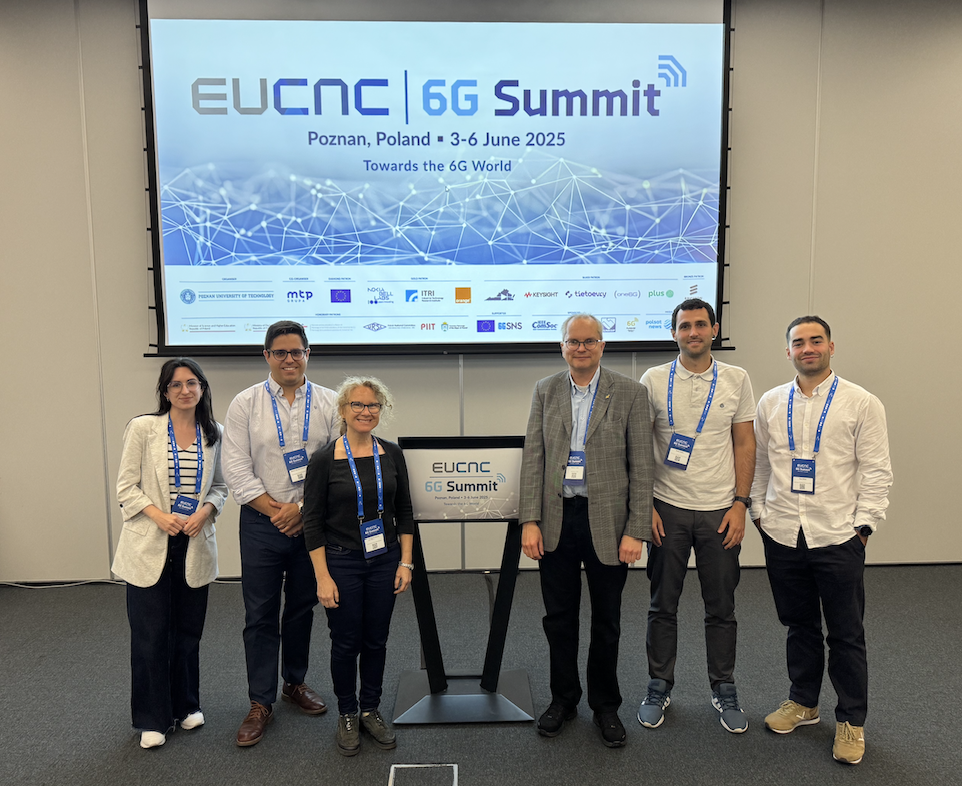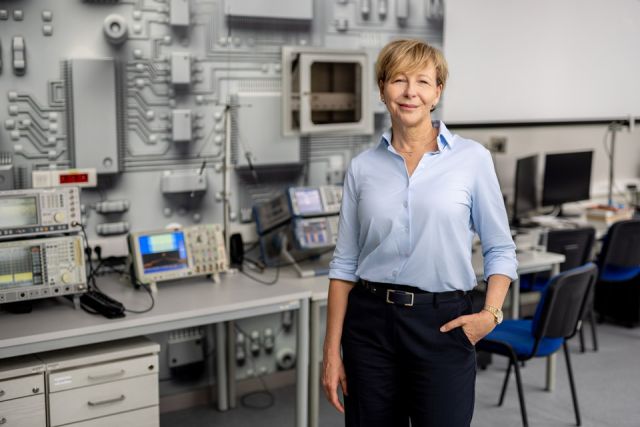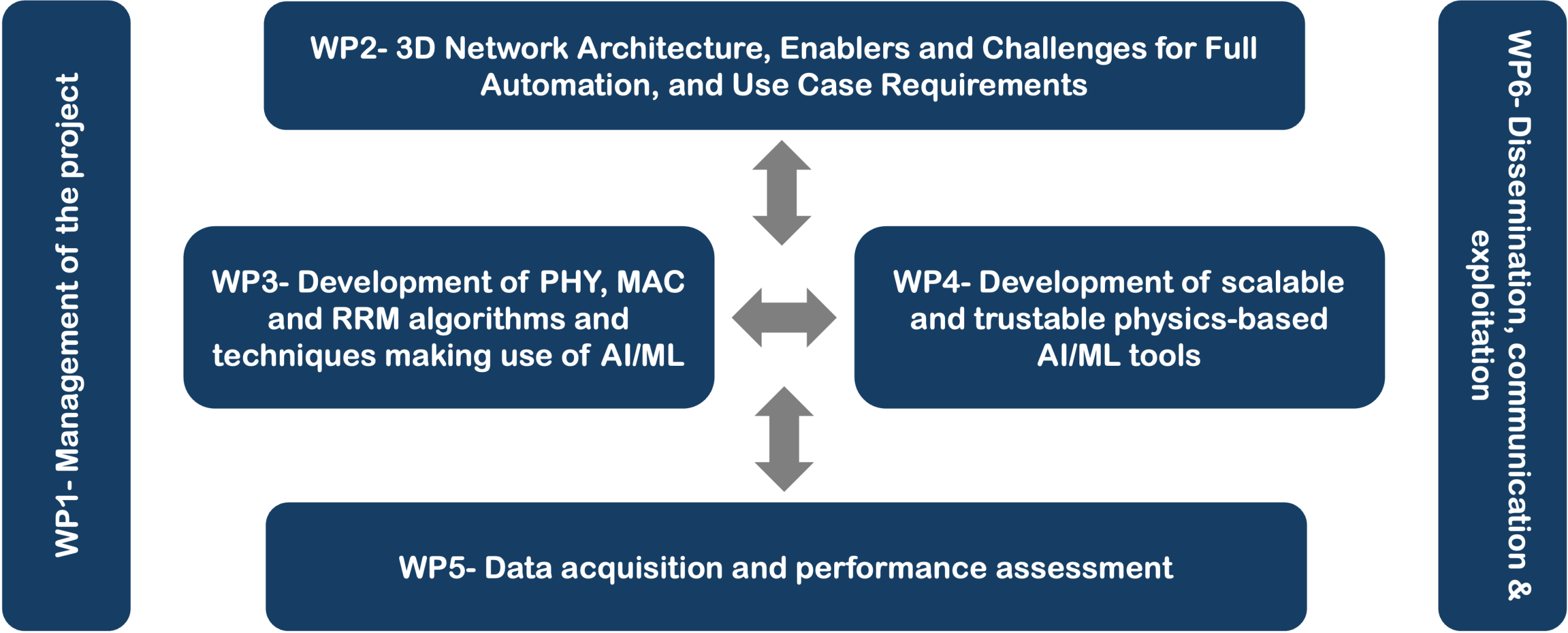
PASSIONATE Project
Physics-based wireless AI
providing scalability and efficiency
LATEST NEWS
-

PASSIONATE Workshop on Physics-based AI for Wireless Communications Held at EuCNC & 6G Summit 2025
On June 3rd, 2025, the PASSIONATE Project hosted the Workshop on Physics-based AI for Wireless Communications during the EuCNC & 6G Summit…
-

PASSIONATE at CHIST-ERA Projects Seminar 2025
We are excited to share that PASSIONATE project had the opportunity to participate for the second consecutive year in the CHIST-ERA Projects…
-

PASSIONATE presented by Hanna Bogucka at National Science Centre, Poland
We are delighted to announce that the PASSIONATE project has been presented at the National Science Centre of Poland by Prof. Hanna…
ABOUT US
Mobile communications have changed, and will continue to change our lives. With 5G under deployment, the interest of the scientific and industrial communities has started focusing on the future 6G communication networks, which will require more advanced capabilities. Achieving new challenging requirements calls for a paradigm shift that PASSIONATE will be advancing.
In the architectural domain, there is a need for full integration and interoperation between satellite, aerial and terrestrial network components, merged in a unique dynamic‐adaptive network infrastructure denoted as the 3D network. Within this architecture, the evolution of mobile communications needs a combination of several innovative and complementary advances at the physical layer (PHY), medium access control (MAC), and radio resource management (RMM) that may be optimised with the use of Artificial Intelligence (AI) and Machine Learning (ML). With these goals in mind, PASSIONATE will unlock ML for wireless by customising and accounting-by-design the unique properties (“physics-based”) of the networks they are applied to. Physics-based ML is, in addition, the suitable approach to ensure the scalability, generalisation, reliability, and user trust of ML, enabling ML solutions that are technically robust and possibly explainable-by-design.
In PASSIONATE, we will develop the understanding and vision of what the application of AI/ML to the wireless network can provide and design use cases that can take advantage of this technology. For these use cases and with the new physics-based AI/ML tools, we will design new PHY, MAC, and RRM techniques and algorithms that achieve the ambitious goals of future mobile networks regarding coverage, data rate, latency, and energy consumption. We will evaluate experimentally by realistic simulations and measurements the achieved gains and contribute to creating data sets that can be used for the community. By advancing the state of the art and stimulating research and technology-based innovation through dissemination, PASSIONATE will create awareness and facilitate the positive impact of advanced wireless communications on society and the economy.
PASSIONATE will pave the way to a complete change of paradigm in the way AI/ML is applied to wireless communications, developing physics-based native AI tools and applying them to the design of innovative PHY, MAC, and RRM techniques.

ABOUT FUNDING

CHIST-ERA is a consortium of research funding organisations in Europe and beyond supporting use-inspired basic research in Information and Communication Technologies (ICT) or at the interface between ICT and other domains.
The CHIST-ERA consortium is itself supported by Horizon Europe within the European Innovation Council’s Pathfinder programme. CHIST-ERA promotes novel and multidisciplinary research with the potential to lead to significant technology breakthroughs in the long term. The funding organisations jointly support high risk and high impact research projects selected in the framework of CHIST-ERA, in order to reinforce European capabilities in promising new or emerging ICT or ICT related research topics.
CHIST-ERA was launched in 2009 and the first call was published in 2010 (Call 2010). As of Call 2020, CHIST-ERA has selected more than 100 projects under 22 call topics for a funding support of approximately 100 M€. Over the same period, it has received about 12.5 M€ from the European Commission, partly to contribute to this investment and partly to cover the management costs of the network.
CHIST-ERA enables researchers to collaborate internationally through projects of intermediate size with a lean management building on the existing national granting schemes. The typical size of a project is about 0.8 – 1 M€ for 3-5 partners. Projects involving more partners are also common.
CHIST-ERA involves all four types of ERA-NET activities:
- Information exchange;
- Definition and preparation of joint activities;
- Implementation of joint activities;
- Last but not least, funding of joint transnational research actions.
PASSIONATE is a CHIST-ERA Project (2022 call) https://www.chistera.eu/projects-call-2022
Sibling projects in WAI call:
MLDR: A Machine Learning-Driven Radio Interface https://www.upf.edu/web/mldr.eu
